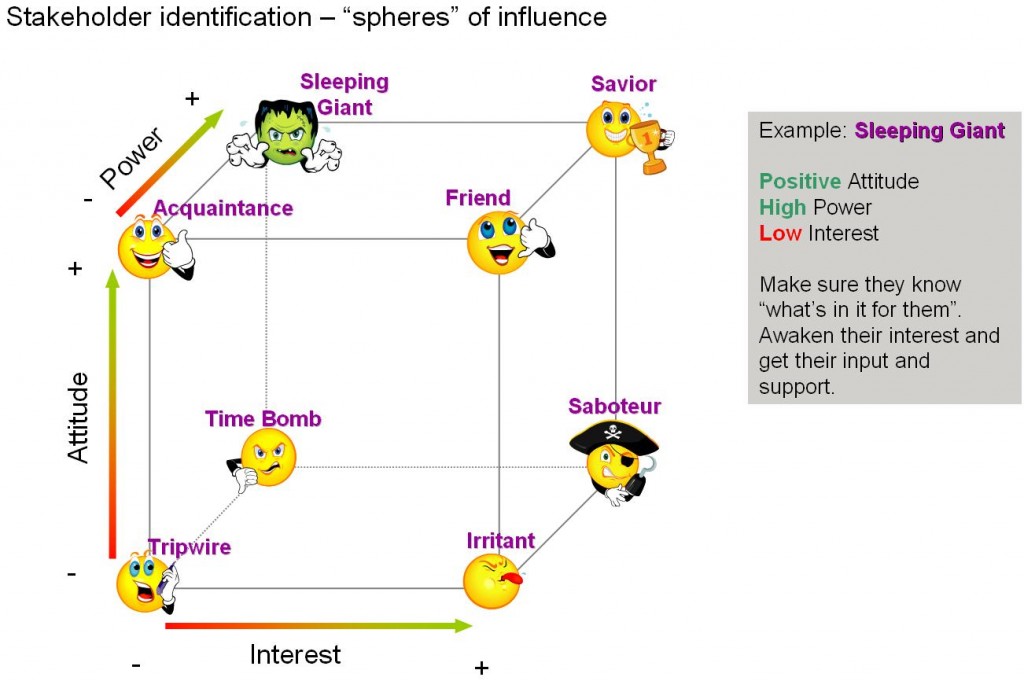
I’d like to start things off in this posting with a joke I heard on the US Television show, Two and a Half Men. Now keep in mind that the show is full of gratuitous innuendo and juvenile comedy, much of it not easily translatable in (nor suitable for) the context of project management. In any case, I have included it word for word here to make sure you have the joke as presented on the show by actor Angus T. Jones, at the time about 10 years old and his character, Jake, not known to be the brightest bulb in the lamp, if you know what I mean. Anyway (sigh) here is the joke:
See a YouTube version of this joke HERE.
The comedy in the joke (and I hate to deconstruct humor, but after all, this is a project management blog) comes from the unexpected – in this case, the unexpected communication – from a muffin. This leads me to the rest of the posting, which is not about muffins, per se, but is about unexpected communications and unexpected muffins, er, stakeholders, and is directly related to the new PMBOK(R) Guide section 10.1, Identify Stakeholders.
—
Summer is about to arrive here in Massachusetts. And for me, that means I will get to spend some time on Cape Cod. Cape Cod is a beautiful arm-shaped peninsula of land that juts out into the Atlantic Ocean, offering miles of beaches and dunes, salt-water taffy, bike trails, interesting birds and sea life, crazy traffic, and it serves as a holiday destination for people from across the US and Canada and increasingly (with the favorable exchange rate) Europe and elsewhere.
It also brings me into an area which is swirling (you’ll get the pun later) in some controversy. At issue is a project called Cape Wind, and there is a real lessons-learned here for Project Managers. The lesson is regarding identifying your stakeholders properly. We hear a lot about managing your stakeholders – but guess what? You cannot manage them if you don’t know who they are first.
If Cape Wind is successful, it will generate about 3/4 of the energy consumed by Cape Cod with renewable, clean energy. It will generate 600 to 1,000 jobs in the area. But it is not loved by everyone.
Observe this snippet from today’s issue of Business Week: “the first large-scale effort to harness sea breezes in the U.S. hit resistance from an army led by the rich and famous, waging a not-on-my-beach campaign. For almost eight years the critics have stalled the project, called Cape Wind, which aims to place 130 turbines in Nantucket Sound about five miles south of Cape Cod. Yet surprisingly, Cape Wind has largely defeated the big guns. In a few months it may get authorization to begin construction. “
The entire article – worth a read – is attainable right here.
Eight years! The project lost eight years of delay and millions and millions of dollars spent in advertising and studies, and continues this battle today.
My point, whether you agree with the Cape Wind supporters or the people opposed to the effort, is that as a PM we need to identify all stakeholders up front and focus not only (as is tempting) on those who will support the project but to think as broadly and deeply as possible about all of those who might stand in its way.
You can take identification to a higher level by continuing on with good stakeholder analysis. A good description of this can be found in Hillson/Simon’s book, Practical Project Risk Management. In it, they refer to a power-interest-attitude grid which I have redrawn into what I call, “Spheres of Infuence”, and was tempted for this posting to rename, “Muffins of Influence”, but will not. Below is the redrawn image – I highly recommend the book for a great treatment of the subject which is also raised in 10.1 of the PMBOK(R) Guide.

In the the wind power case, Cape Wind was surprised, and ill-prepared, in my opinion, about a very unlikely (but in fact plausible) collection of organizations who came together to oppose the project – environmentalists, landowners, fishermen, birders – people you might think would normally amd naturally support a green effort (I think I am showing my leanings here). I think that they should have thought longer and harder at the beginning of the project about identifying how these individuals (some of whom are very powerful, with surnames such as Kennedy) were stakeholders in this effort and how they may have aligned against it. Using the Muffins of Influence, er, rather Spheres of Influence chart, Senator Kennedy is a sort of “Saboteur” in this particular case. And there probably were some “Sleeping Giants” that Cape Wind could have awoken to help them earlier on.
Take a lesson from Cape Wind. Identify your stakeholders – even opponents, maybe even especially opponents – early on, and manage them continuously.
Ask yourselves:
–Who might be opposed to my project?
–Why?
–What are their relationships with us?
–What are their spheres, and levels of power and influence?
–What are their relationships with each other?
–How might opponents work together in unexpected ways to impede progress?
–Are there ways to arrange a win-win?
Asking these questions now – and knowing your stakeholders and their needs – will improve your chances of “clean energy” on your project.
Now…wouldn’t you like to go have a nice coffee and muffin and think this over?
Oh…by the way…it’s been my honor and pleasure to be a guest blogger here at UCSC. If you like these postings, see more like them at ScopeCrepe! <–thats a link

Excellent post ! Knowing your stakeholders helps you watch your back and ‘prepare for the worst’ so-to-speak. Unfortunately project managers sometimes see themselves as mere task managers. Putting together a big-picture view in this manner is key to project success. It actually helps you anticipate roadblocks as Rich points out.